Key points
These are 3 key points most common centerpiece ideas for your wedding:
- Fresh flowers make stunning centerpieces that add color and life to any wedding table.
- Candles create a warm and romantic glow that transforms the reception space.
- Non-floral elements offer unique centerpiece options that guests will remember.
Contents
Design Principles for Wedding Centerpieces
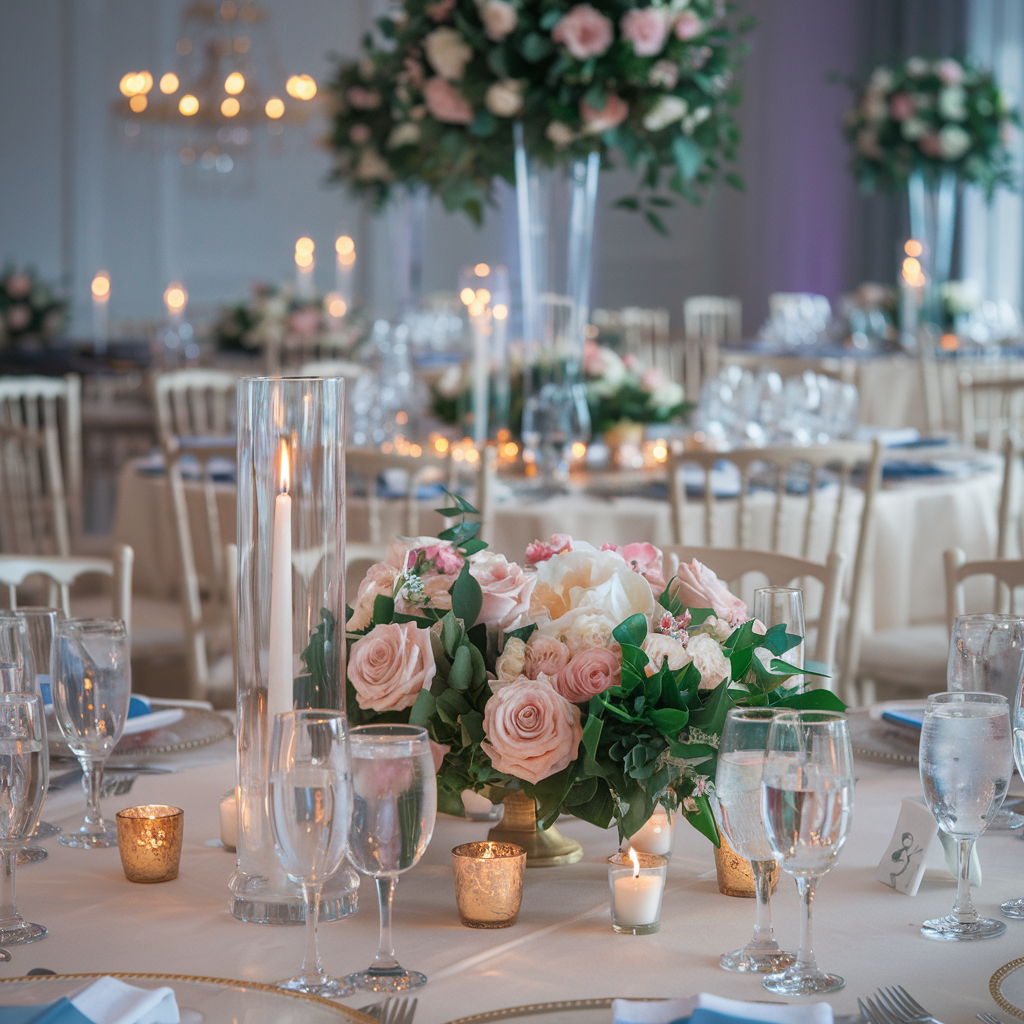
Karen Bussen’s book “Simple Stunning Wedding Flowers” gave great tips for making lovely centerpieces. She believes that good design starts with a clear vision. One should visualize how they want the tables to look before buying different decorations (Bussen, 2008, p. 42).
She also talked about the rule of odd numbers. The flowers must be grouped in 3s, 5s, or 7s rather than 2s or 4s. Using odd numbers to pick a focal point enhances the centerpieces and makes them look professional with minimal effort.
Balancing Aesthetics and Functionality

Let’s be honest – centerpieces must look good and function well.
“The prettiest centerpiece is a nuisance if guests can’t see each other across the table” (Bussen, 2008, p. 56). It should be under eye level (12 inches or so) or tall enough (minimum 24 inches) so guests can see under them.
It is also a good idea to see the venue rules. Some venues won’t allow open flames so those pretty candle ideas might need to be switched out for LED ones. Looking this way can help save a few bucks and brush off the stay-green when the season runs.
Color Theory and Flower Selection
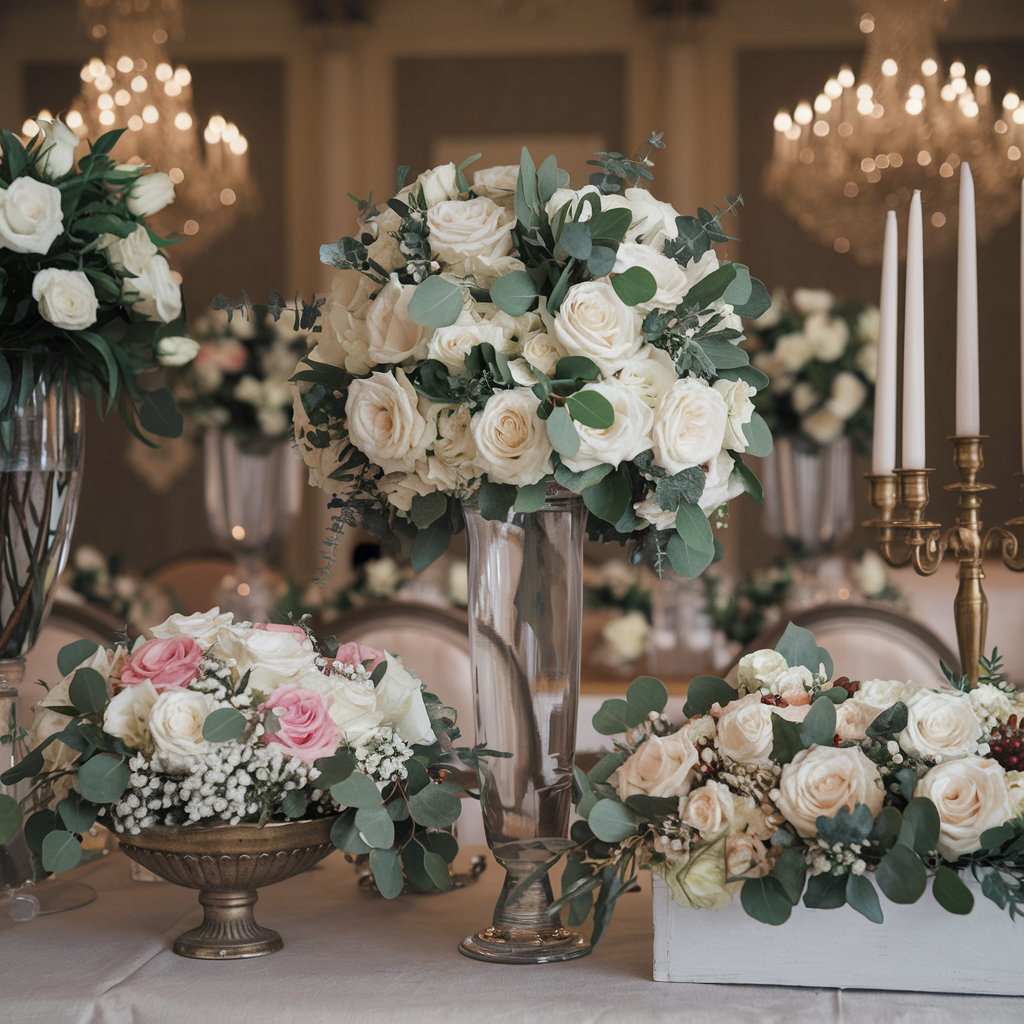
Look at the colors and why they make sense. Try matching the colors with the wedding theme but think about the mood you’re trying to create. Most cool colors like blue and purple have a calming and elegant effect while warm colors like red and orange will hype the space with energy and excitement (Bussen, 2008, p. 73).
Choose a starflower that you love and build around it (Bussen, 2008, p. 73). This tactic makes centerpieces interesting and with a heavyweight element. According to Bussen combining texture like a soft or ruffled peony next to a hard calla lily makes it more interesting.
Proportion and Scale in Centerpiece Design
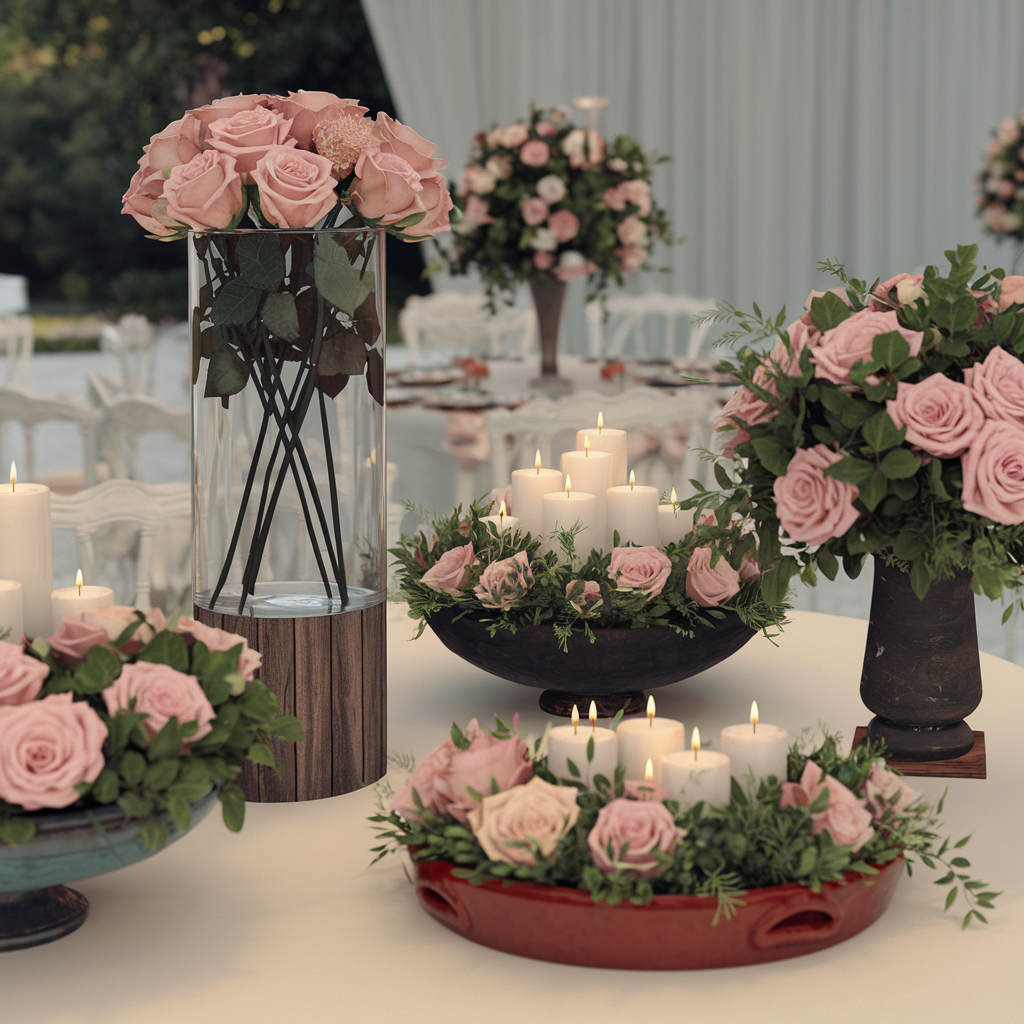
Size matters when it comes to centerpieces. A small flower arrangement will look lost on a big table while a big centerpiece will look overwhelming on a small table. According to Bussen the centerpiece’s size should be proportional to the table size and the room itself.
Use the tip of using the “table real estate.” Lengthy tables require runners with smaller arrangements on top or larger pieces spaced further apart. While round tables must have a single-center arrangement.
Be mindful of the container when putting your arrangement together. It is recommended that the height of the vessel or vase should be one-third the height of the total arrangement. This proportion gives the most pleasing look.
Types of Wedding Centerpieces
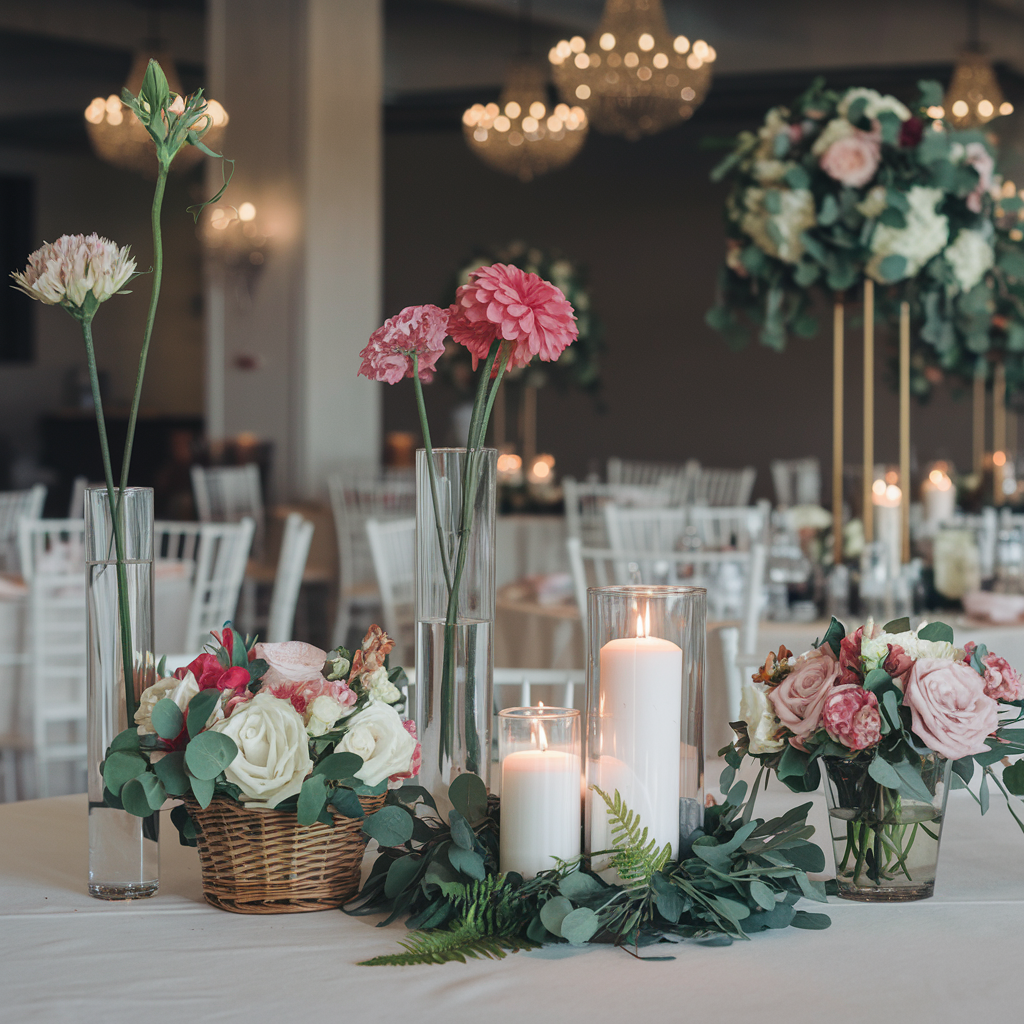
Karen Bussen’s Simple Stunning Wedding Flowers shows how flowers can make the tables look stunning but on a budget. Here are the main types of centerpieces to try:
Traditional Floral Arrangements
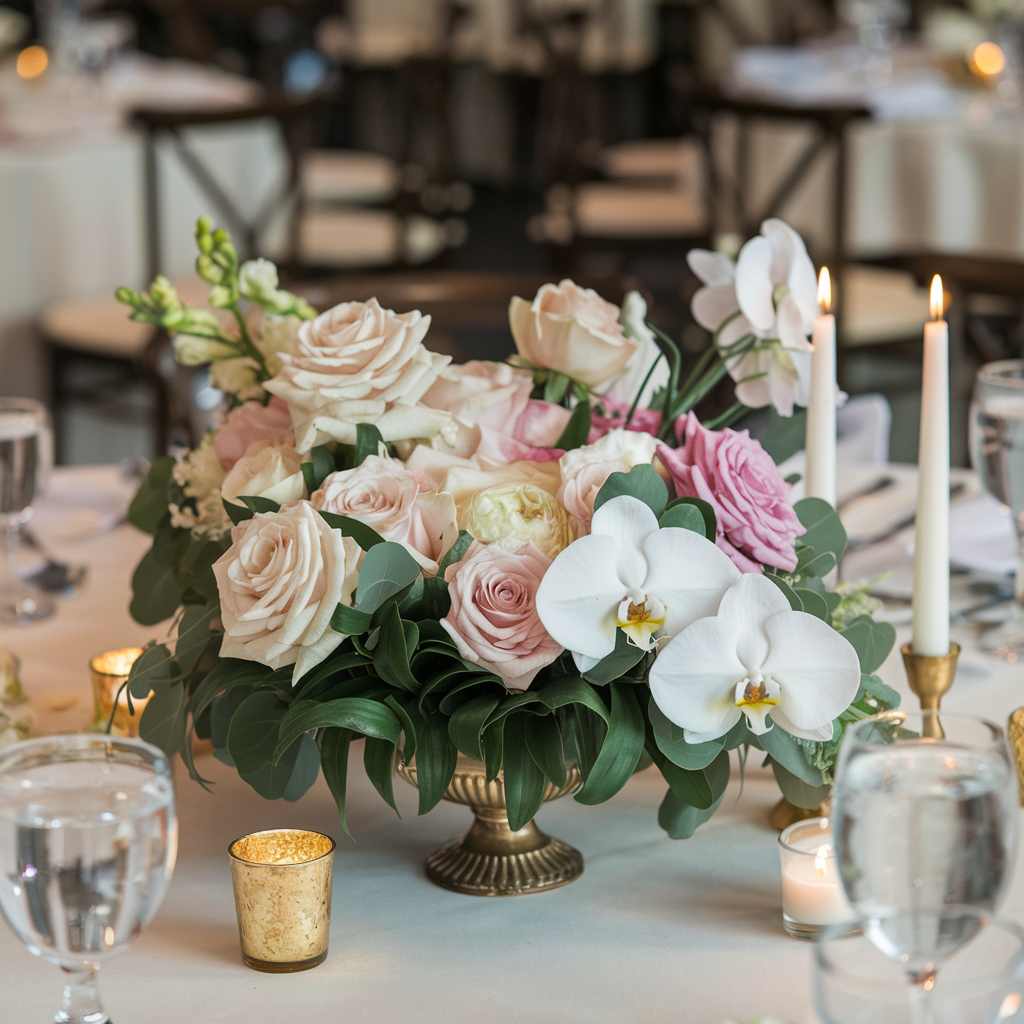
Traditional centerpieces never go out of style. If you think of “wedding flowers” then this arrangement is probably what you have pictured in your head.
It is suggested to use simple round arrangements using roses, peonies, or hydrangeas. These flowers are full and make a statement. “Classic does not have to mean common” says Bussen in her book “Customizable Modern Classic Arrangements of Your Choice: Black and White Fun.”
But don’t feel stuck with just one flower type. Mix in some smaller blooms or greenery to add texture. An arrangement of complementary colors and different flowers looks better and prettier.
Contemporary and Minimalist Designs
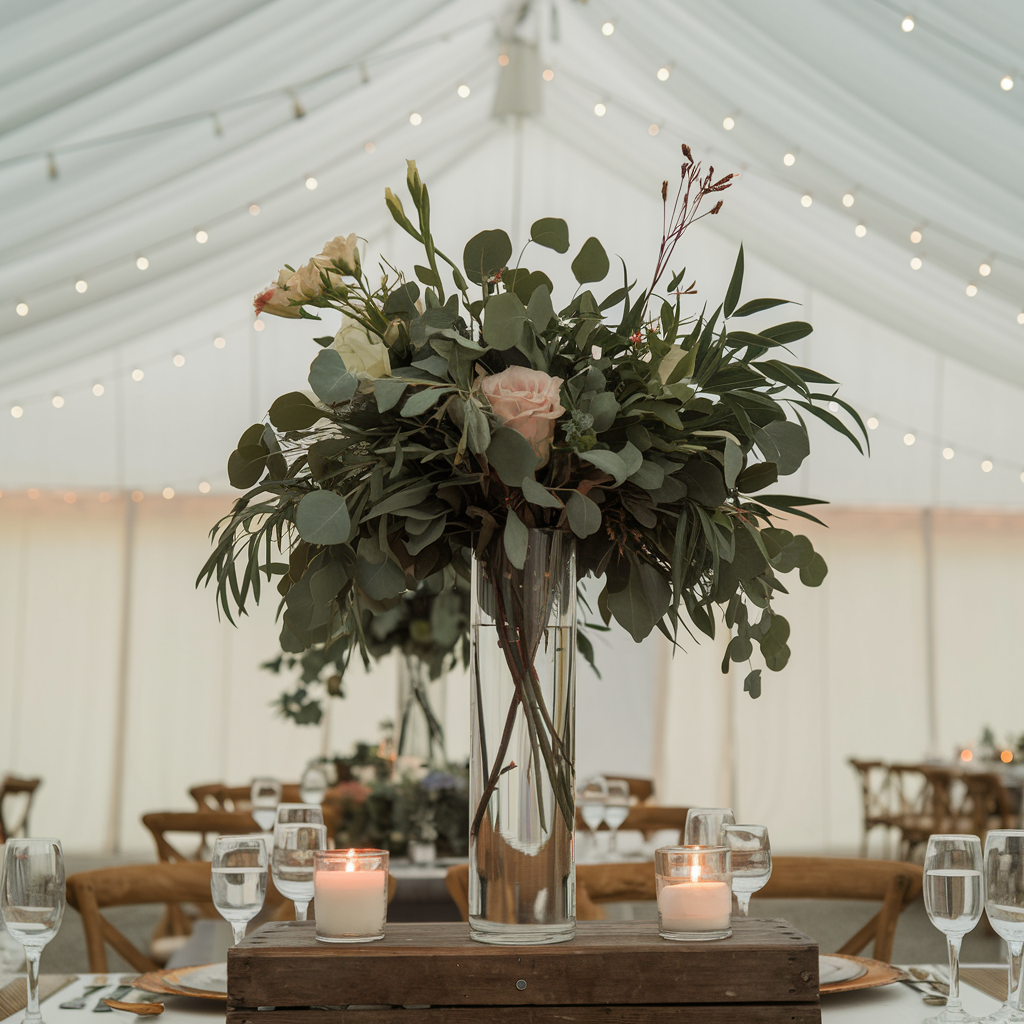
Want something more modern? Bussen had good ideas for that. Modern centerpieces don’t need a lot of flowers to be striking. Picture yourself with elongated narrow vases for floral arrangements that sit on a table to accentuate the height and start from there.
Not having an impact is not minimalist. Sometimes the simplest designs make the strongest statement. Even using three different height cylinder vases with just one type of flower on each side can look clean and elegant.
Thematic and Seasonal Centerpieces
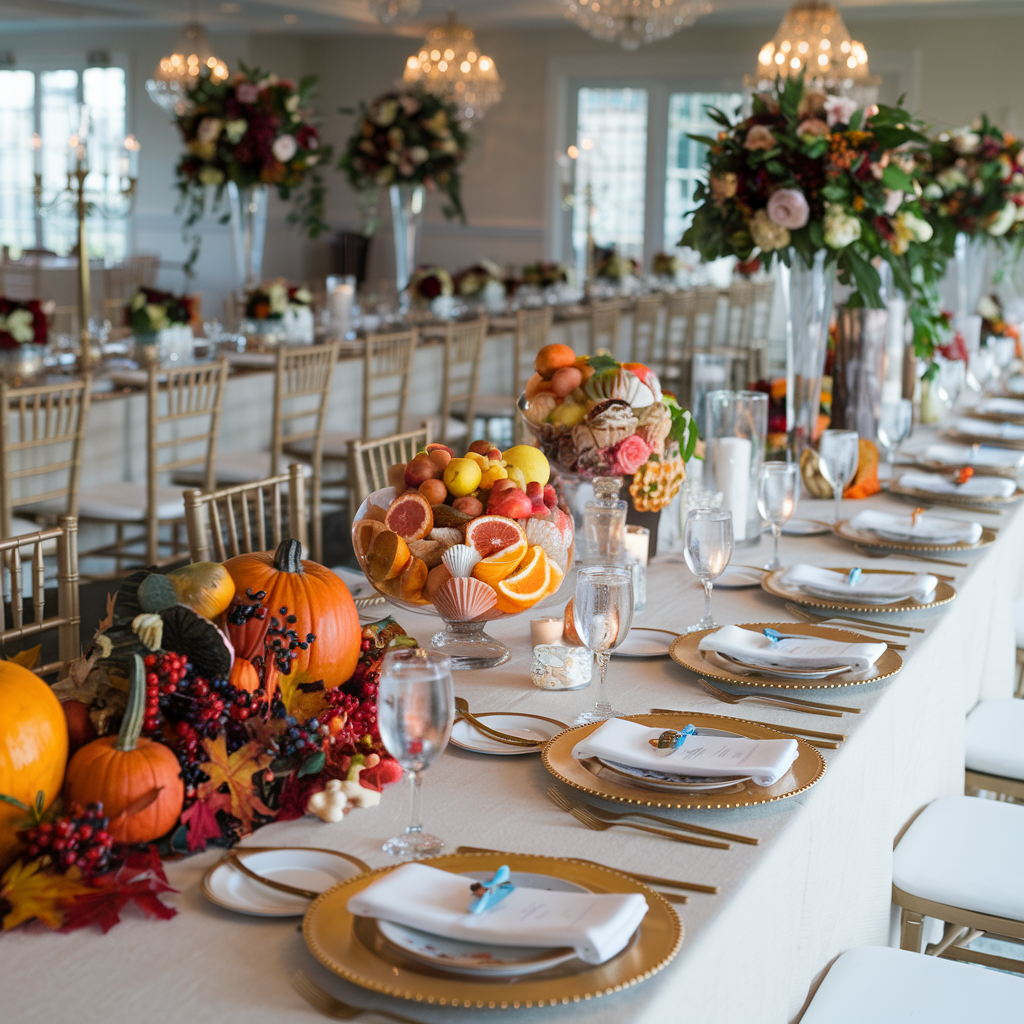
Bussen speaks about sophisticated seasonal centerpieces. These save money and feel more organic when used in the season. Add small pumpkins, berries, or colored leaves to arrangements for your fall wedding. Try citrus fruit or seashells in among the flowers if the wedding’s during summer.
Bussen says “Follow the season’s lead.” Incorporate seasonal elements into the wedding to enhance the aesthetics of the celebration while being environmentally conscious.
The centerpieces should show off who the couple is whether they lean toward traditional, modern, or seasonal arrangements. Don’t just look good — set the tone for the entire reception.
DIY Centerpiece Ideas
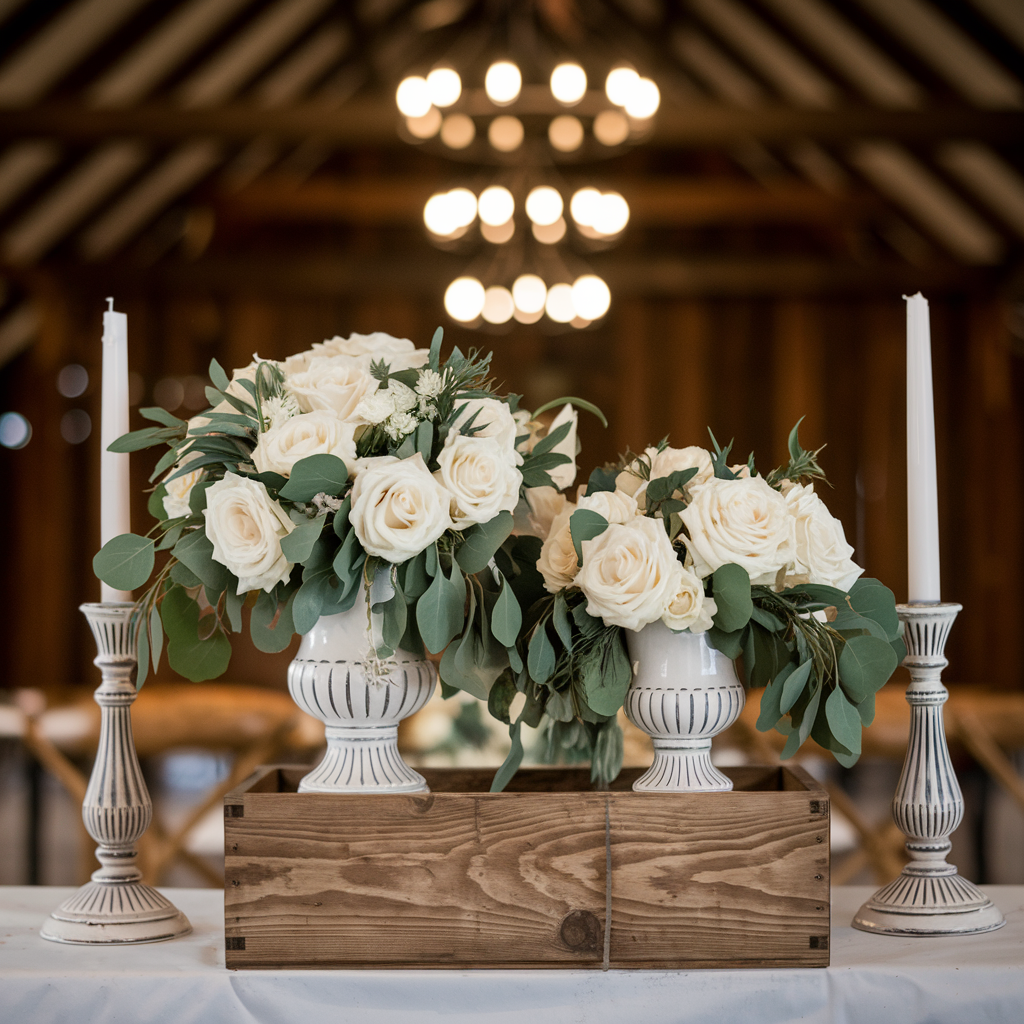
Karen Bussen’s “Simple Stunning Wedding Flowers” gave out some clever and cheap ideas for DIY centerpieces. Creating centerpieces can be both fulfilling and inexpensive (Bussen, 2008, p. 78).
That’s right. Making your own centerpieces will let someone’s personality shine through.
Simple and Cost-effective Options
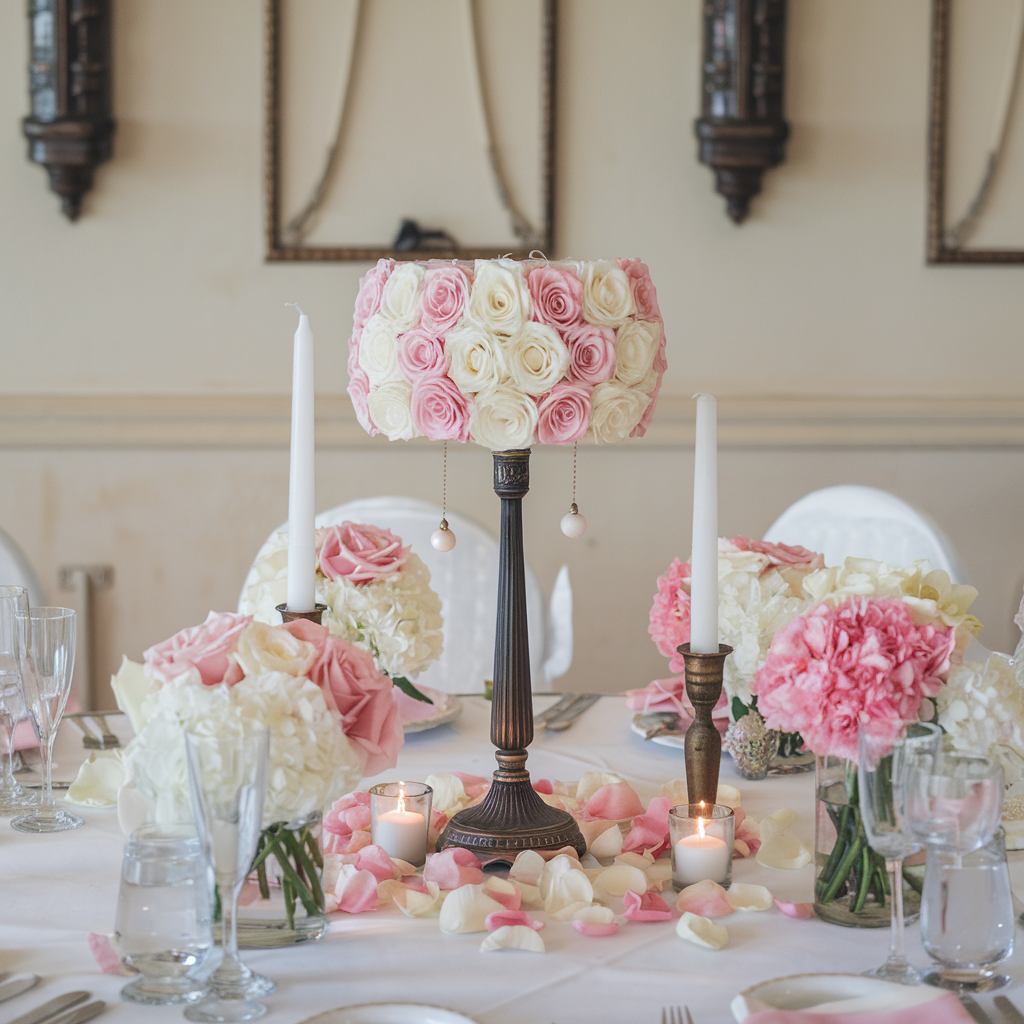
No need for fancy flowers to make pretty centerpieces. Simple elements arranged together can create a powerful visual statement. Here are some easy ideas:
- Floating candles and flower petals in clear glass bottles
- Mason jars filled with wildflowers
- Potted herbs for the guests
- Little vases with singular stems grouped together
- Mixed spring fruits with fancy flowers like lemons with Brian berries, red pomegranate, or cranberry-white rose mix.
A new report released by The Wedding Report found that couples save an average of 40-60% on floral costs when they make their own centerpieces (The Wedding Report, 2019).
Step-by-step Guide to Creating Your Own Centerpieces
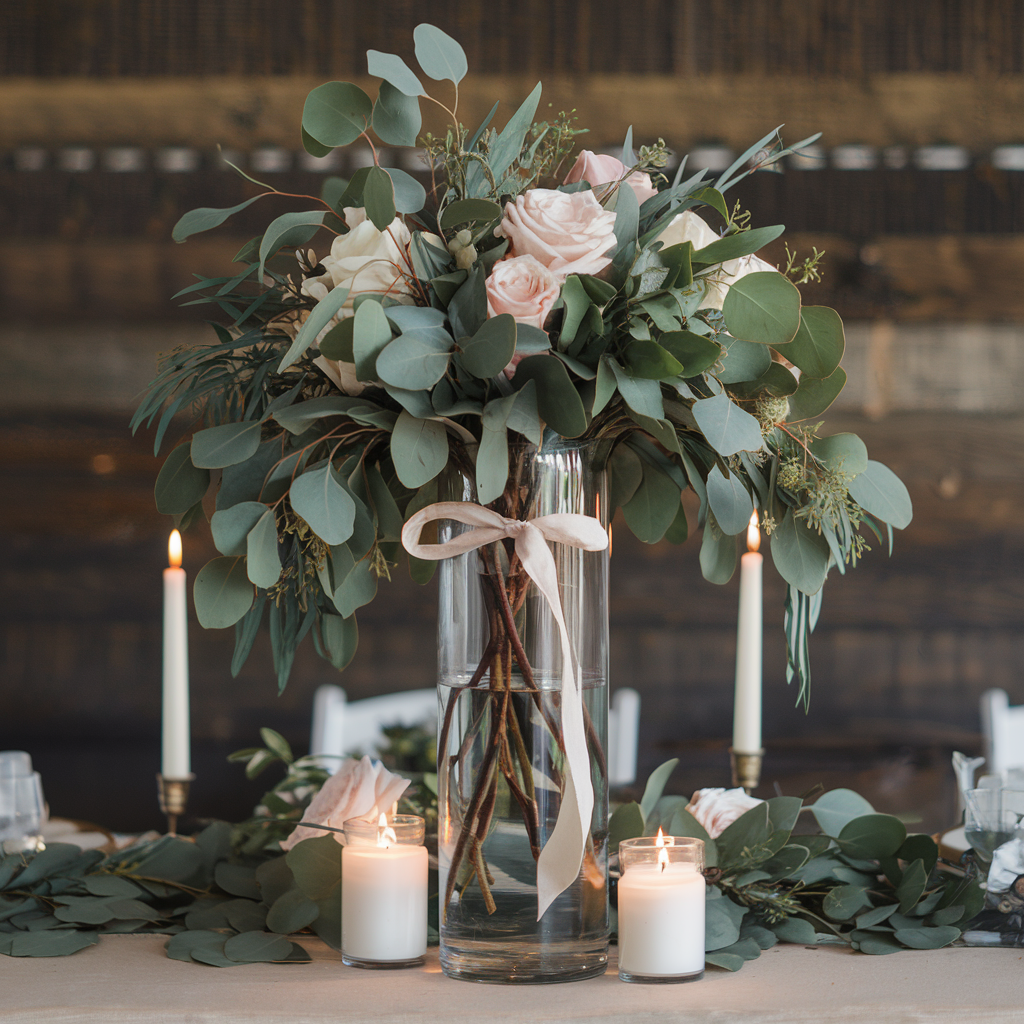
Ready to make your own centerpieces? Here’s how to do it:
1. Pick your containers – thrift stores have great cheap options.
2. Pick a flower that lasts – Use hardy blooms like roses, carnations, or chrysanthemums.
3. Buy flowers 2-3 days before the wedding
4. Cut the stems at an angle and put them in water right away.
5. Arrange flowers in the containers the day before.
6. Keep arrangements cool until the big day.
Bussen mentions that “Some flowers continue to grow after being cut like tulips and it may change the design” (Bussen, 2008, pg. 93).
Tips for Sourcing Materials
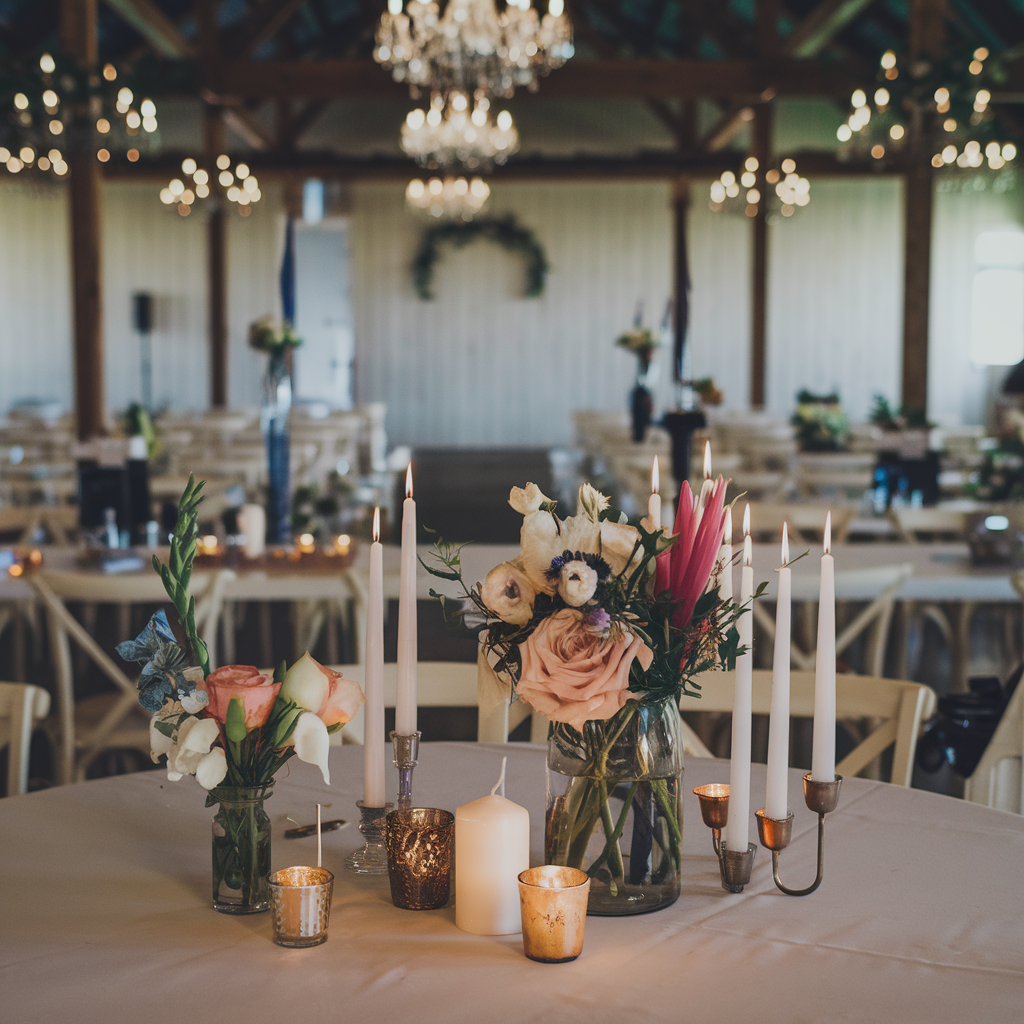
Finding cheap materials is key to saving money. Look beyond the flower shop. Here’s where to source materials:
- Local farmer’s market
- Wholesale flower markets
- Sites like Fifty Flowers or Blooms by the Box
- Dollar shops
- Own backyard for greenery and fillers
- Friends’ gardens
Expert Insights on Centerpiece Trends
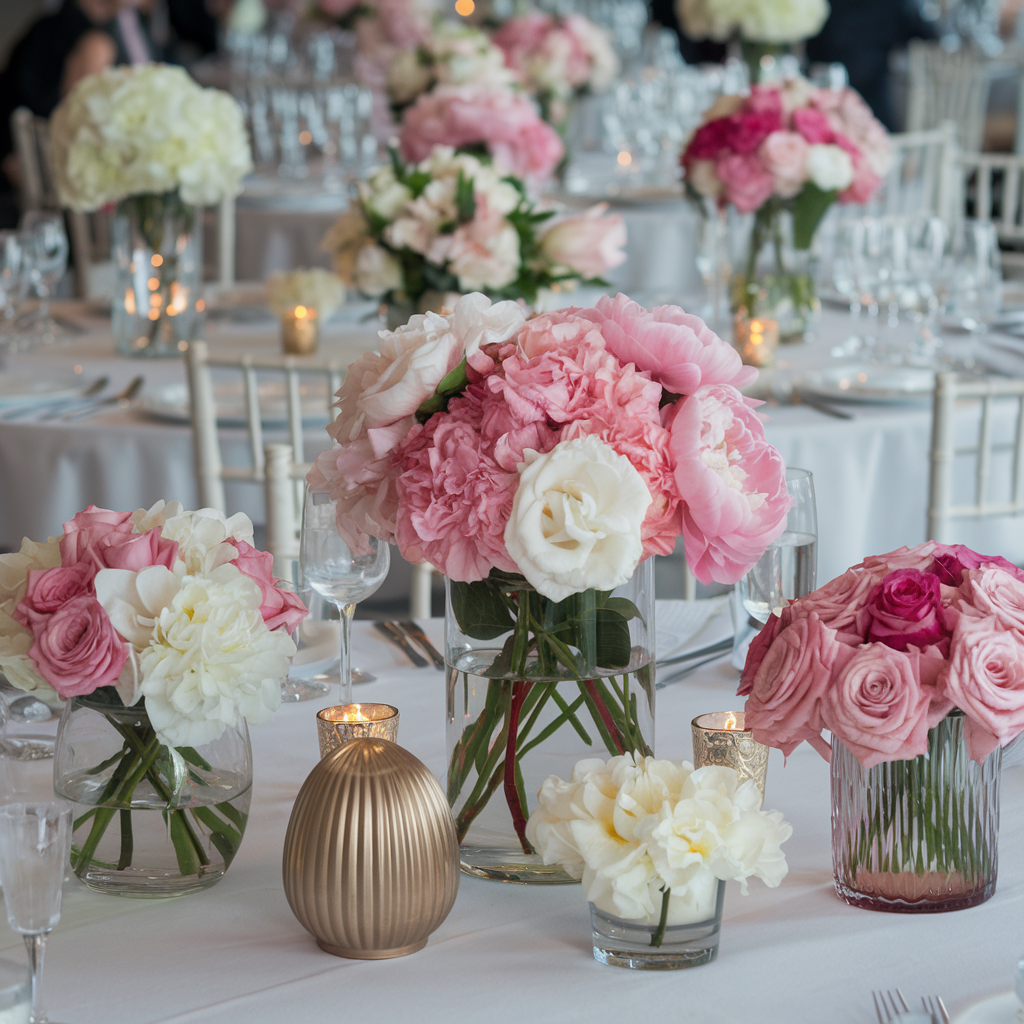
Karen Bussen’s book “Simple Stunning Wedding Flowers” focuses on centerpieces and how flowers tell stories at weddings. “Centerpieces are conversations” she said. This makes so much sense. When guests sit down they’ll quickly notice what’s in the middle of their table.
Bussen notes that trends favor local seasonal flowers instead of exotic imports. Couples save cash by spending on flowers like lilies.
Height matters a lot in centerpiece design. Learn to dimensionally mix the centerpieces to create a “visual rhythm” in the room. Do this to bring more rhythm to the space.
Frequently Asked Questions (FAQ)
How do centerpieces impact reception costs?
Reception centerpieces can significantly impact your wedding budget. Floral arrangements from a florist can cost $75-300 per table. DIY centerpieces cut this expense by 40-60% in most cases. Someone can spend $350 total on DIY supplies from dollar stores and Christmas Tree Shops instead of the $1,800 quote from a florist. The trick? Combine candles with simple flowers like dianthus and hydrangeas. Mirrors underneath arrangements create elegance and the illusion of more blooms. Wedding Wire says “Couples typically spend 8% of their total budget on décor, with centerpieces consuming nearly half of that allocation.” If money’s tight then candle centerpieces with floating candles and pearls are a good choice. It creates beautiful tablescapes at minimal cost.
What centerpiece ideas work for unconventional venues?
When planning to have a wedding at an industrial venue one must bear in mind that centerpieces must complement the location. Rustic venues need a combination of pine cones, rocks, eucalyptus, and pillar candles in cylinder vases to create perfect tablescapes. Beach venues shine with sand-filled vases and shells. While ballroom receptions require taller arrangements with peonies, roses, and Queen Anne’s lace to add status and elegance. Katherine O’Brien Photography notes “The venue dictates 70% of your tablescape design.” Industrial spaces benefit from metal elements combined with soft candlelight and greenery. One memorable centerpiece to create for a garden wedding feature is a trough with floating candles and rose petals – it added recommendations for decoration ideas. The key is choosing elements that match both the couple’s vision and the venue’s character.

I am a free-spirited author with the focus of relationships, travel, mental health, and womanhood. I am still new to the writer scene but am excited for the journey that awaits.